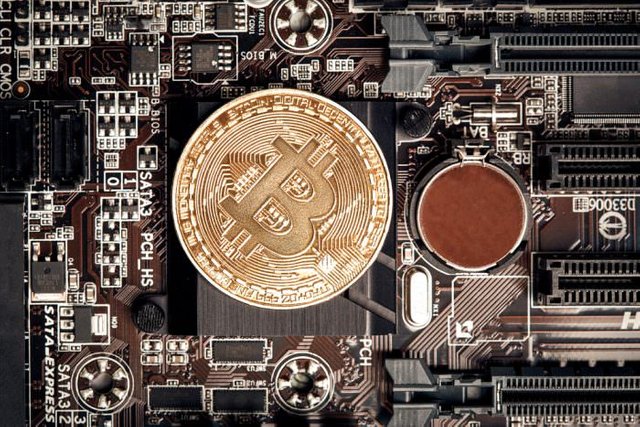10 most important events in the history of cryptocurrency
In 2018, with digital currencies becoming more and more involved in our everyday life, recognized by governments, it’s sometimes hard to think (or remember) about how it all started, so we put together a brief cheat sheet on the history of cryptocurrency – one of the most dynamic and innovative industries that continues to evolve and change our lives.

#1: 1977-1999. Algorithm and its early adopters
It all started back in 1977 when three MIT professors (Ron Rivest, Adi Shamir and Leonard Adleman) invented an RSA algorithm, which is now considered a backbone of digital security in the modern age in general, as well as digital currency in particular. In short, it allowed the confidentiality, integrity, authenticity and non-reputability of electronic communications and data storage.
#2: 1993. David Schaum invents DigiCash
American cryptographer officially introduced the world’s first form of digital money in the Netherlands. By 1997 he managed to raise money for his idea, and even had an agreement with a St. Louis bank to back the ecash concept. At one point, Microsoft was willing to pay as much as $180 million to put Schaum’s company on every PC in the world, however, he chose not to take it.
At that time he might have been anticipating a much bigger payout, and he might have been right. However, shortly thereafter Schaum got into a hostile war with The Central Bank of Netherlands (De Nederlandsche Bank), and his company went bankrupt in 1999, strapping cash for patents. Some experts argue that DigiCash was far too ahead of its time. In 2016 Schaum was named ‘the father of online anonymity’ by Wired magazine.
#3: 1999. PayPal turns online transactions from ‘hype’ to ‘mainstream’
Put simply, the company has realized the main thing digital commerce was lacking in terms of customer experience – security. Inventing the way to pay and get paid through email, PayPal made a strategically right move and partnered up with then largest e-commerce website, ebay.com. By 2004, PayPal had reached a revenue of $1.4 billion. In another significant move for the crypto world, PayPal started accepted cryptocurrencies as a form of payment back in 2014.
#4: 2008. Satoshi Nakamoto introduces Bitcoin, creates Blockchain

Bitcoin concept was fresh, innovative and engaging. In a white paper called “Bitcoin: A Peer-to-Peer Electronic Cash System” that Nakamoto published in October of 2008, Bitcoin was presented as a way to security pay, get paid, as well as transfer assets without any involvement from governmental or financial institutions. In the same white paper, Nakamoto also introduced Blockchain as a cryptocurrency network that “timestamps transactions by hashing them into an ongoing chain of hash-based proof of work, forming a record that cannot be changed without redoing the proof of work.” This technology was the beginning of cryptocurrency as we know it today.
#5: 2009. First Bitcoin mining and transaction
On January 3, 2009, Satoshi Nakamoto performed first ever cryptocurrency mining that consisted of 50 Bitcoins. The so-called ‘genesis block’ cannot be redeemed as it was created with a unique code in it. Additionally, as part of his ‘digital signature’ with a goal to preserve this historical moment, Nakamoto included a headline from the British Times issue of January 3, 2009, which said “Chancellor on brink of second bailout for banks.” No doubt, the headline included in the code meant to remind yet one more time that the current financial system had to be reformed.
In less than 10 days after the first mining, on January 12, 2009, Nakamoto processed world’s first ever transaction in Bitcoin by sending digital coins to Hal Finney – another cryptographer, who published a white paper called “RPOW – Reusable Proofs of Work” in 2004, which essentially was a precursor to Bitcoin.
#6: 2011. Silk Road goes live. And the business booming!
Encryption of digital currencies was quickly recognized for those who wanted to stay ‘off-the-grid’, and one of the major players turned out to be anonymous marketplace Silk Road, which went live in February 2011, and offered a wide array of legal and not-so-legal goods and services, available for purchase in Bitcoin. Just after 18 months after the site’s launch, Forbes revealed that the site had whooping revenue of $1.9 million a month.
Shortly after the Forbes report, in October 2013 FBI shut down the platform, and its founder, Ross William Ulbricht, was arrested while working on his laptop at a San Francisco library. His estimated net worth at the time of the seizure was $28.5 million.
#7: 2011. Bitcoin equals U.S. dollar
Just two years after the first Bitcoin transaction in January 2009, Bitcoin has celebrated yet another major milestone. February 9, on leading cryptocurrency exchange MtGox, Bitcoin reached parity with the U.S. dollar. In the following years, the upward trend continued, with two other significant marks for a Bitcoin value rocketing at $1,100 in late 2013, and $4,300 in August of 2017.
#8: 2013. The total value of Bitcoin exceeds $1 billion
Starting from early 2013, Bitcoin was on the steady rise. In February 2013, each Bitcoin was valued at $32. Just a month after, there was a total of 11 million Bitcoins in circulation, with each one being valued at $92. This put the total capitalization of Bitcoins at over $1 billion, marking another impressive milestone the digital cryptocurrency has achieved in only 4 years after being released.
#9: 2013. Ethereum goes further with its own Blockchain

Created by Russian-born programmer Vitalik Buterin in 2013, Ethereum marked another milestone on the cryptocurrency market. While having all the essential features that Bitcoin is providing, Ethereum also offered a completely new technology that allows cryptomarket players to create the so-called ‘smart contracts’ apps that can benefit from the security the chain provides. Ethereum officially positions itself as “a decentralized platform that runs smart contracts: applications that run exactly as programmed without any possibility of downtime, censorship, fraud or third-party interference.”
#10: 2017-2018. Era of state approvals and government recognitions begins
As soon as governments have recognized that cryptocurrencies are here to stay, the smartest and fastest of them turned to regulators. In July of 2017, LedgerX became the first digital currency exchange that got U.S. federal approval. Several state governments, including Russia and Ukraine, have publicly announced that they’re working on the adoption of state policies to outline clear conditions and guidelines for operating in the cryptocurrency space. Other state governments – for instance, Spain – turned to cryptocurrency as a resource to resolve state’s budget deficit, by making all crypto assets taxable.
October 24, 2018, Japan proved itself yet again as one of the major technology innovation hubs by establishing a self-regulatory industry body, the Japan Virtual Currency Exchange Association (JVCEA), as an official regulatory industry body for the cryptocurrency industry.
Same day, on October 24, Coinbase Custody received New York state banking license to operate as a Qualified Custodian. With the new license obtained by Coinbase, financial analysts anticipate even more traditional financial institutions, such as banks and hedge funds, to enter and invest in the cryptocurrency space by the end of 2018.
Post written by Darya
Darya is a blockchain market observer with 5+ years of experience as an author and editor for major tech blogging platforms. Her fortes are blockchain technologies and solutions, cryptocurrencies and crypto-related regulations.
Follow OpenLedger!
I'm really looking forward to the day that OL re-enables the Steem gateway! That'll be the next logical evolution in Blockchain history!!!! ;) Thanks for the article.
Ha, agree on that one :-)
Posted using Partiko Android